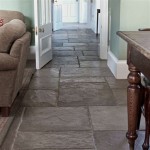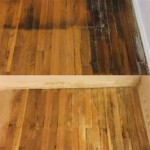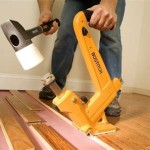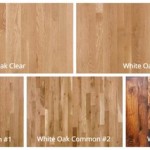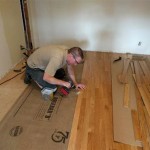Gray Spots on Hardwood Floor After Cleaning it With Vinegar: Causes and Solutions
Hardwood floors are a desirable feature in many homes, valued for their beauty, durability, and timeless appeal. Maintaining their pristine condition, however, requires proper cleaning and care. A common household cleaning agent often touted for its versatility is vinegar. While vinegar can be effective in certain cleaning applications, its use on hardwood floors can sometimes lead to undesirable outcomes, such as the appearance of grey spots. Understanding the reasons behind this phenomenon is crucial for preventing further damage and implementing appropriate corrective measures.
The appearance of grey spots on hardwood floors after cleaning with vinegar is a relatively common issue. These spots often manifest as dull, discolored areas that detract from the floor's natural luster. The problem stems from the acidic nature of vinegar and its interaction with the floor's finish and underlying wood. Identifying the specific cause is the first step towards resolving the problem and restoring the floor's original appearance.
The use of vinegar as a cleaning agent for hardwood floors is often suggested due to its perceived natural and non-toxic properties. However, hardwood floors, especially those with certain types of finishes, can be sensitive to acidic solutions. Therefore, careful consideration and proper precautions are necessary before using vinegar for cleaning. Failing to do so might result in irreversible damage to the floor's surface.
Understanding the Properties of Vinegar and Hardwood Floor Finishes
Vinegar, specifically white vinegar, is a diluted solution of acetic acid. Its acidity level typically ranges from 5% to 8%. This acidity, while effective for cutting through grease and grime, can be detrimental to certain hardwood floor finishes. Most modern hardwood floors are protected by a polyurethane or similar synthetic finish. These finishes are designed to be durable and resistant to wear and tear. However, they are not impervious to acidic substances.
The pH scale measures the acidity or alkalinity of a substance. A pH of 7 is neutral, values below 7 are acidic, and values above 7 are alkaline. Vinegar has a pH of around 2-3, making it quite acidic. When a strong acidic solution like undiluted or overly concentrated vinegar comes into contact with a polyurethane finish, it can gradually dissolve or weaken the protective layer. This weakening effect makes the finish more susceptible to scratches, stains, and discoloration.
Traditional hardwood floor finishes, such as wax or oil-based finishes, are even more vulnerable to the effects of vinegar. Wax finishes, in particular, are prone to becoming dull and cloudy when exposed to acidic cleaners. Oil-based finishes can also be stripped of their natural oils by vinegar, leaving the wood dry and susceptible to damage. The type of finish applied to the hardwood floor is therefore a critical factor in determining whether vinegar is a suitable cleaning agent.
Mechanisms Leading to Grey Spot Formation
The appearance of grey spots after cleaning hardwood floors with vinegar is typically the result of a combination of factors. The primary mechanism involves the etching and dulling of the floor's finish. The acetic acid in vinegar gradually dissolves the top layer of the finish, creating microscopic imperfections on the surface. These imperfections scatter light unevenly, resulting in a dull or cloudy appearance, which is often perceived as grey spots.
Over time, repeated exposure to vinegar can completely remove the finish, exposing the bare wood beneath. This exposed wood is highly susceptible to moisture absorption and staining. Water spills, foot traffic, and even humidity can further contribute to discoloration and damage. The exposed wood can also react with minerals in the water used for cleaning, leading to chemical reactions that result in grey or black stains.
Another contributing factor is the buildup of vinegar residue on the floor. If the vinegar solution is not properly diluted or if the floor is not thoroughly rinsed after cleaning, a thin layer of vinegar residue can remain on the surface. This residue can attract dirt and grime, which further contributes to the dull and discolored appearance. The combination of finish degradation, exposed wood, and residue buildup collectively leads to the formation of noticeable grey spots.
Prevention and Remedial Actions
Preventing grey spots from appearing on hardwood floors is significantly easier than trying to remove them after they have formed. The key lies in adopting appropriate cleaning practices and using suitable cleaning agents. Before using any cleaning product, it is essential to identify the type of finish applied to the hardwood floor. This information can usually be obtained from the flooring manufacturer or installer.
If the floor has a polyurethane or similar synthetic finish, using a pH-neutral cleaner specifically formulated for hardwood floors is the recommended approach. These cleaners are designed to effectively remove dirt and grime without damaging the finish. When using vinegar, it must be highly diluted. A solution of no more than 1/4 cup of white vinegar per gallon of water is generally considered safe for some polyurethane finishes, but even this diluted solution should be used sparingly.
Regardless of the cleaning agent used, it is crucial to avoid excessive water usage. Hardwood floors are susceptible to water damage, and prolonged exposure to moisture can lead to warping, cupping, and other structural problems. Use a damp mop rather than a wet mop, and always wring out excess water before applying the mop to the floor. After cleaning, thoroughly dry the floor with a clean, dry cloth to remove any remaining moisture.
Addressing existing grey spots requires a more involved approach. The specific method will depend on the severity of the damage. For minor discoloration, gentle cleaning with a pH-neutral hardwood floor cleaner might be sufficient. Apply the cleaner according to the manufacturer's instructions and buff the floor dry with a soft cloth.
If the grey spots persist, more aggressive measures might be necessary. One option is to use a specialized hardwood floor restorer or polish. These products are designed to revitalize the finish and restore its original luster. Apply the restorer or polish evenly over the affected areas and allow it to dry completely according to the manufacturer's instructions. Multiple applications might be required to achieve the desired results.
In cases where the damage is severe, such as when the finish has been completely removed and the wood is stained, refinishing the hardwood floor might be the only option. Refinishing involves sanding down the existing finish, repairing any damage to the wood, and applying a new coat of finish. This process is best left to professionals, as it requires specialized equipment and expertise.
Regular maintenance is crucial for preventing future problems. This includes sweeping or vacuuming the floor regularly to remove dirt and debris, using rugs or mats in high-traffic areas to protect the finish, and promptly cleaning up spills to prevent staining. Avoiding the use of harsh chemicals, abrasive cleaners, and excessive water will also help to prolong the life of the hardwood floor and maintain its beauty.
Furthermore, consider the type of mop used for cleaning. Microfiber mops are generally recommended for hardwood floors because they are gentle on the finish and effectively trap dirt and grime. Avoid using sponge mops, as they can trap water and spread it unevenly across the floor. Always use a clean mop to prevent re-depositing dirt and grime onto the floor.
Finally, it's crucial to remember that not all hardwood floors are created equal. Different types of wood, finishes, and installation methods can all impact the floor's durability and resistance to damage. Consulting with a flooring professional is always a good idea, especially when dealing with older or more delicate hardwood floors. A professional can assess the condition of the floor and recommend the most appropriate cleaning and maintenance procedures.

Hazy Hardwood Floors Here S What To Do Dave Floor Sanding

How To Remove Stains From Wood The Craftsman Blog

The Best Way To Remove Stains From Wood Floors Maria Louise Design

Options For Fixing The Dreaded Pet Stains On Wood Floors Floor Business

Staining A Hardwood Floor With Vinegar And Steel Wool

How To Remove Pet Urine Stains From Wood Floors Guaranteed

How To Remove Pet Stains From Hardwood Floors

Cleaning Laminate Which Has Some White Patch Hometalk

Removing White Spots On Hardwood Floor 7 Simple Method

Removing Dog Urine Stains From Hardwood Floors Hometalk
Related Posts


